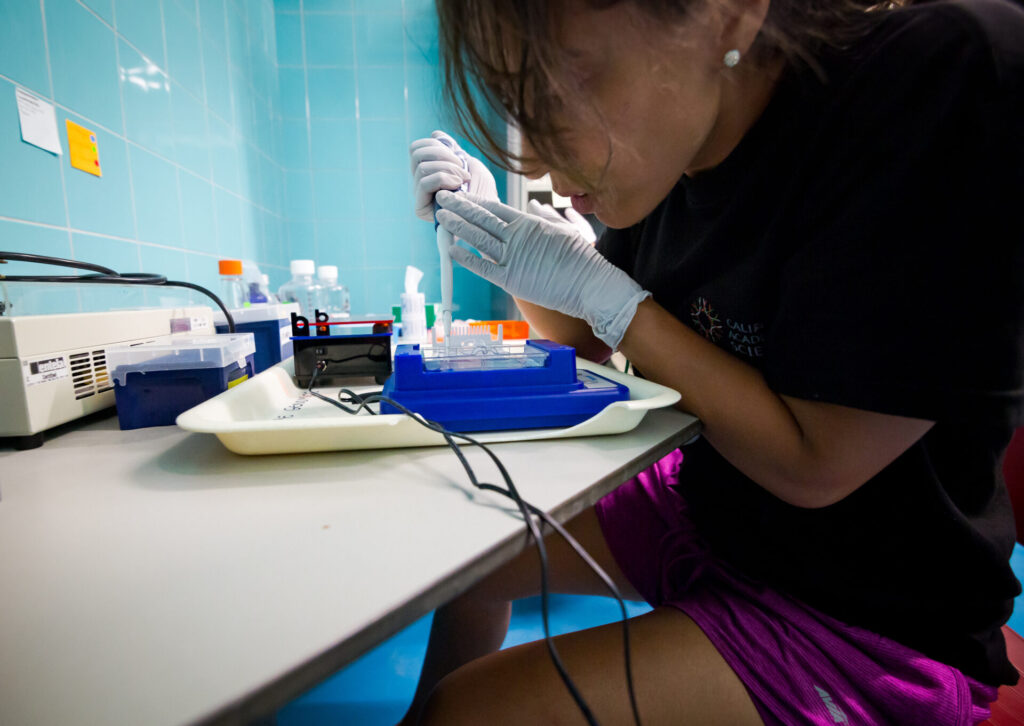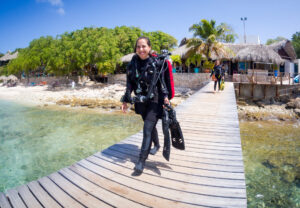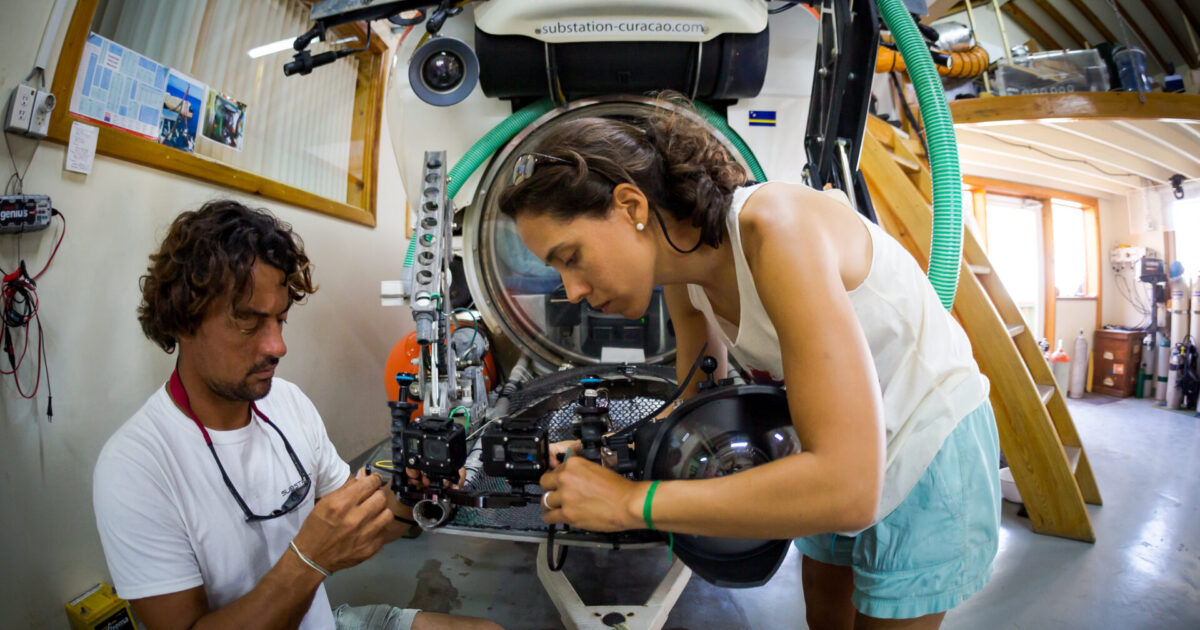Let’s face it: Tech diving is a male-dominated field.
At least that’s the reality that Cal Academy Coral Ecologist Alejandra Hernandez has faced. Coming up in the academic circuit—from fieldwork to lab to classroom—she’s always felt like the odd woman out.
But despite that dynamic, Alejandra has always had women she looks up to that have inspired her to excel. “I’ve been in situations where I’m challenged, but there are so many great role models to follow.”
Who are Her Role Models?
An early mentor of Alejandra’s after she earned her PhD was Dr. Sonia Rowley, a researcher at the University of Hawai’i at Mānoa’s School of Ocean & Earth Science & Technology (SOEST).
They met 2018 through mutual friends, and Rowley was instrumental in encouraging Alejandra to push deeper into the marine science field.
“During that time, I was in the middle of the application process to CalAcademy,” Hernandez recalls. “I knew the Academy had a well-known and respected Rebreather program, so I started to do some research. But I was overwhelmed and scared with the risks of diving a rebreather. My friends were in town collaborating with [Dr. Rowley] and invited me for dinner. I knew it was an excellent opportunity to discuss diving with the closed circuit with someone with whom I identify with as a woman and marine scientist.
“It was fascinating to hear her dive stories,” Hernandez continues, “the places she could access by diving with the closed circuit, and how she approached those risks. That conversation really changed the way I saw the rebreather diving. I digested the fear/respect/overwhelming sensation after that conversation. It sounded like something I could do.”

Another of Alejandra’s role models is Marine Biologist Ruth D. Gates. On top of being a Director and Research Professor at the Hawai’i Institute of Marine Biology, Gates was also the first woman to be President of the International Society for Reef Studies. “I admire her in many ways as a reef scientist, leader, communicator, and person,” Alejandra says. “Besides her vast contribution to coral biology, she was also an engaging science communicator and strong advocate for collaboration as a powerful path to advance marine science.”
Alejandra is also a huge fan of Hollis Rebreathers ambassador and godmother of tech diving, Jill Heinerth. During her studies, a professor encouraged her to read one of Jill’s books, The Basics of Rebreather Diving, and she instantly felt a kinship and bond with the renowned explorer and tech pioneer.
“It’s really awesome to see a woman hold such a lofty position in a male-dominated world,” She says of Heinerth. “All of the cave dives. All of the expeditions, writing books that weigh heavy in the field—I really appreciate the work she has done.”
Despite the bumps in the road and the historical reluctance to let new people in, the women who have preceded Alejandra in marine science—like Sonia and Jill—have mostly quieted the naysayers. Even so, Alejandra feels that sometimes she’s invited to an event “just as a token.”
Implicit Bias in Diving
“Sometimes I have that perception,” she explains. “Rather than because of my record as a scientist. But I just decided to take those opportunities and prove that I can be more. And that’s been very good for me! I don’t necessarily want to prove anything to anyone. But it’s good to show myself that even if I was invited for the wrong reasons, I can still show up and excel at my job.”
These days, to her surprise, Alejandra reckons with her own gender bias. As she explains, there’s a lack of diversity in the CCR diving world, and that reality affects her perceptions.
“It’s completely unconscious,” she says, perplexed, “but people will lean toward men in the process of selection or collaboration.”
But she says that that tendency toward gender bias is definitely changing and she’s glad to see that dynamic evolving. For the past few years, when she reviews pictures from research expeditions, the crew of researchers heavily skews female, sometimes up to 90%.

“I’m so glad that we’re changing that imbalance,” she says. Women are considered for many roles today that they were not considered for previously. There has never been a better time to be in the field.”
“It’s always refreshing to see women taking positions of power and managing big groups of people—that’s the kind of role model I follow.”











